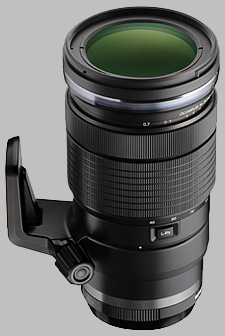Those fall under the "stops" part. Not saying that's worth nothing (it obviously is worth something or people won't be buying), just that there's a much bigger gap in terms of generic lens features between the $200 kit lens and $1000 PRO lens than the $1000 PRO lens to the $3000 Nikon lens. This has to do with PRO and Nikon lens both being essentially professional quality, so they share a lot of features naturally.Nikkor lets you shoot on a 36 MP sensor that lets you crop down cleanly and gives you more DR/color depthMoving from the 40-150mm f/4-5.6 to the f/2.8 for $800 more, you gain a lot more than just simply the stops. You gain:You are right, only 2.5 stops between between the D500, more for the D810 of course.
Anyways, how about some napkin math?
An f2.8 m43 zoom is $1,000, a kit lens is $200. Five times as much for one to two stops and better sharpness across it's range. The Nikon, on any modern Nikon sensor, is two to three stops better, too. Is it five times more than the f2.8 m43 zoom? At $3100 retail, it's a better technical value, if I care about it's usefulness vs. alternatives in the m43 world. It also replaces the primes in m43 easily, something the existing m43 f2.8's cannot hope to do to any comparable system. The Nocticron can do things that the f2.8's can't dream of doing, of course.
I won't be buying the new Nikon lens, but I can justify it's price easily if I were a professional. It would, ultimately, save me money owning it, vs anything that m43 has to offer across it's range (and the way that I shoot, right at that threshold).
Fortunately, I like m43 for more than it's "pro" f2.8 lenses.
-constant aperture
-silent focus motor (both important for video)
-internal focus and internal zoom
-all metal construction (vs plastic)
-weather sealing (11 seals)
-clutched focus ring for true manual focus (vs fully electronic)
-shorter minimum focus distance (70cm vs 90cm)
-more magnification (0.21x vs 0.16x)
-included tripod collar and lens hood
When you move to the 70-200mm for $2000 more, you gain only the extra stops and pretty much nothing else (the PRO lens already have almost all the features).
I think most people would consider the PRO lens a much better value.
More DoF control too... this is a legitimate portrait lens whereas an MFT 2.8 kind of isn't
That's gotta count for something
If Olympus made a f/2.8 that was essentially the same as the kit lens in all the other characteristics, then Arizona Sunset might have a case about value, but at that point, I don't think it would cost $800 more either.


